6 conclusions from the 2021 Tour de France
Cavendish's comeback, Ineos' disarray, Mohoric's zipped lips and more
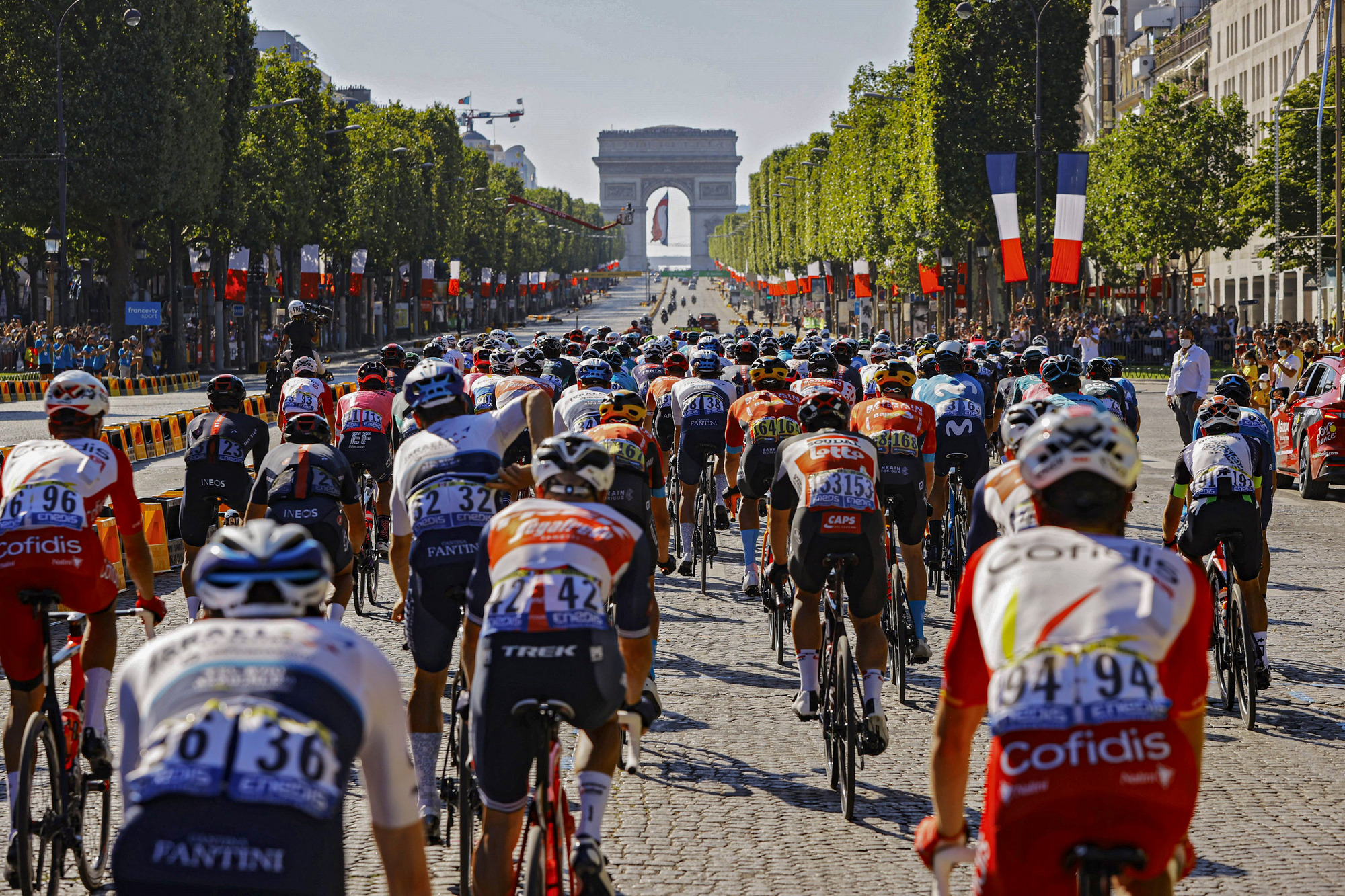
With the 2021 Tour de France now in the rearview mirror, our writers have reflected on the most significant events, storylines, and developments from the past three weeks.
Tadej Pogačar (UAE Team Emirates) sealed his second straight overall title on Sunday evening, as Wout van Aert (Jumbo-Visma) snatched the final stage to deny Mark Cavendish (Deceuninck-QuickStep) the outright record for stage wins. We delve into both Pogačar's and Cavendish's rides, as well as examining the contrasting fortunes of the two biggest teams, Ineos Grenadiers and Jumbo-Visma.
We also examine the 2021 Tour as a spectacle, wondering why the race fizzled out after the high-octane first week, and highlighting the importance of both questions and answers in a race where the spectre of doping resurfaced once again.
Read on for our six conclusions from the 2021 Tour de France.
Old order gives way to disarray at Ineos
For the bones of a decade, Ineos – or rather, its previous iteration of Team Sky – brought order to the Tour de France peloton, but on this year’s race, the team often appeared to be in disarray. Their muddled thinking was perhaps apparent from the outset, when the squad set out from Brest with four potential leaders in Richard Carapaz, Geraint Thomas, Tao Geoghegan Hart and Richie Porte. The line between having options and creating factions is a fine one.
Early crashes quickly meant that Carapaz was quickly the last man standing among the initial quartet of captains, but rather than coalesce around him, the team appeared to fragment. There was obvious mitigation for Thomas, who was hindered by a dislocated shoulder, but Geoghegan Hart and Porte were too often absent from the Ecuadorian’s side at key moments. Instead, it was usually Jonathan Castroviejo, 'fresh' from a pivotal role at the Giro d’Italia in the service of Egan Bernal, who proved Carapaz’s most reliable domestique.
On the occasions when Ineos did have numbers in the yellow jersey group, they deployed them in unimaginative ways. Rather than trying to discommode Pogačar, they effectively did his bidding by setting a tempo that only helped him to control his rivals, such as on the double ascent of Mont Ventoux. So much for the team’s self-styled reinvention as an attacking force last Autumn.
Get The Leadout Newsletter
The latest race content, interviews, features, reviews and expert buying guides, direct to your inbox!
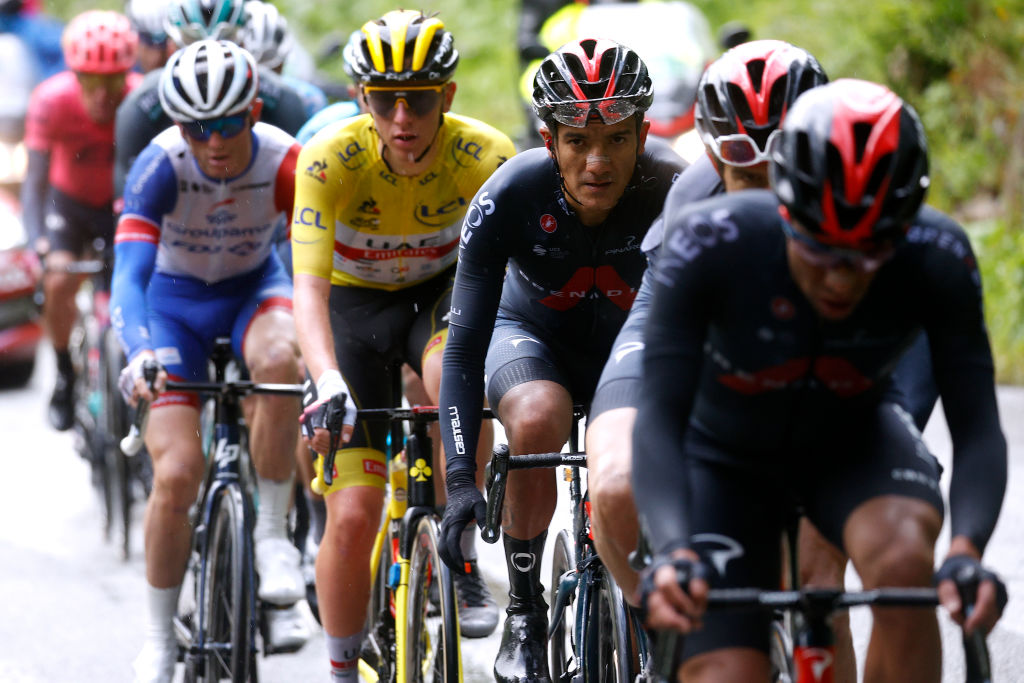
Pogačar’s dominance was such that it’s unlikely any combination of Ineos leaders working in tandem could have beaten him, but the sheer lack of invention in the team’s approach to the Tour was nonetheless striking. It also contrasted sharply with Jumbo-Visma’s more creative approach to their early loss of Primož Roglič.
Carapaz’s third-place finish in this Tour owes everything to his consistency and doggedness, but precious little to the support he received from the wealthiest team in professional cycling. One manager on the Tour suggested that Ineos’ decline was due partly to the fact that their usual financial pre-eminence is now being challenged by teams like UAE Team Emirates, who are bankrolled generously by backers in the Middle East. Yet Dave Brailsford’s budget (€50 million in 2019) is still the biggest in the sport, and his transfer activity still dwarfed that of anyone else last winter, as he signed Porte, Dani Martinez and Adam Yates to an already stacked roster.
The decision to spare Yates for the Vuelta raises questions about Ineos’ selection policy, but the most important absentee was, of course, Bernal, the only rider in the team’s roster who might realistically have competed on the same plane as Pogačar. The Tour was never in prospect this year after his Giro d’Italia victory, but Bernal will surely return in 2022. And if he is to topple Pogačar, he will need a more harmonious team around him than the discordant selection that struggled to carry a tune on this Tour. (BR)
Cavendish is back on top
Final memories of any bike race are dangerously skewed by their last moments. But the sight of Mark Cavendish grimacing in disappointment and defeat as he crossed Sunday’s line on the Champs Elysées cannot and should not bely what the British sprinter had achieved beforehand.
There was so much to play for in Paris. There always is. It’s worth remembering triumphing on the Champs Elysées is a success for any sprinter that goes down in the history books of the race, no matter how many times they’ve won before (which in Cavendish's case was four - already a monumental record).
As for 2021, a month before the race Cavendish was not even due to get a start in the Tour de France, but the circumstances altered that. His last-minute replacement and return to the race led to a moment, 20 kilometres into the first stage, of massive self-doubt. But then came his own, matchless answer: four stage wins and a green jersey.
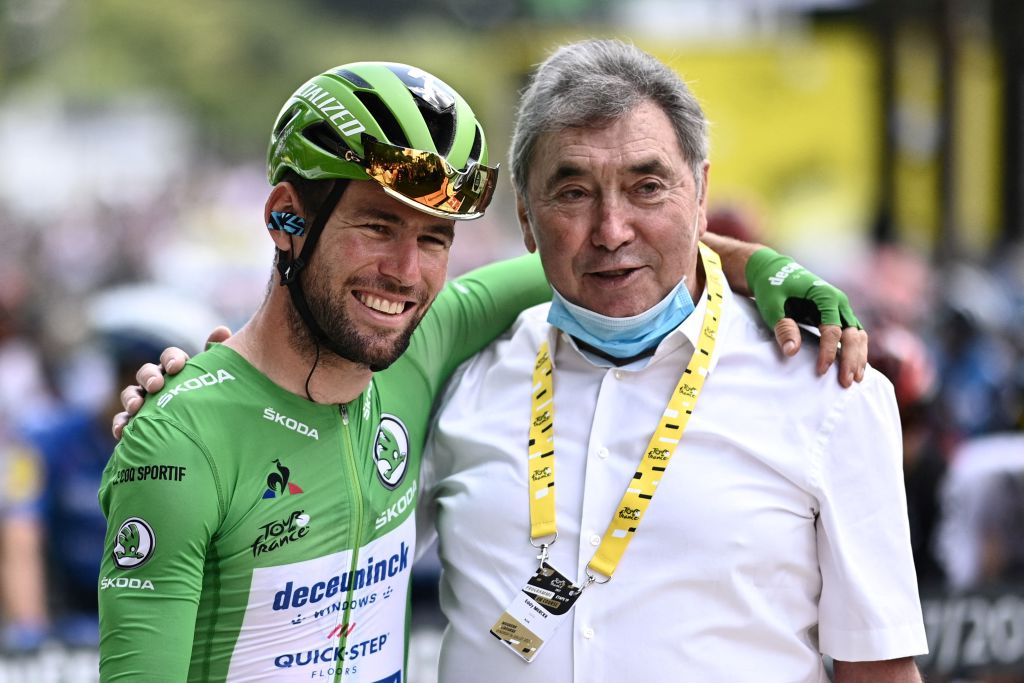
In Paris, Cavendish was markedly cautious about whether he’ll return to the Tour in the future. But while many fans will be keen to see him back, in many ways it doesn’t matter. Simply taking part in the 2021 Tour was a chance to show people who have battled against their own health issues - mental and physical - that it is possible to overcome those obstacles.
As Cavendish himself put it: "If people can be inspired by what I’ve done, then that’s the greatest joy I can get out of this Tour de France."
That an idea that goes far beyond the sport and matters way more than any record. It’s one of the most remarkable conclusions and lessons of any Tour. (AF)
No sealed lips: inquiries are crucial to cycling’s credibility
Willa Cather wrote that there were "only two or three human stories, and they go on repeating themselves as fiercely as if they had never happened before". Sometimes it feels that way at the Tour de France, where history has a habit of recurring over and again.
There were certainly some familiar tropes on this year’s race. The yellow jersey faced questions about the credibility of his performances in his press conferences. French police searched the hotel and vehicles of a competing team for evidence of doping. And, perhaps most grimly of all, one of that team’s riders then aped Lance Armstrong by miming the zipping of lips when he won in Libourne the next day. 'Watch, but don’t ask questions', seemed to be the message.
The problem, of course, is that some performances on this Tour raised a great many questions. That much is hardly new. Ever since the Festina Affair, many journalists and fans alike have been hardwired to be sceptical about what they witness on the Tour. But as a report in Le Temps last week demonstrated, this year some insiders – that is to say, competitors in this Tour – have had concerns of their own about the remarkable displays of a select cadre of riders and teams.
It is one thing for outsiders to be sceptical about what they see, but it is rather more alarming when riders themselves become resigned to the idea that they are not competing on a level playing field. The onus should be on the UCI and the International Testing Agency’s cycling unit to allay those concerns.
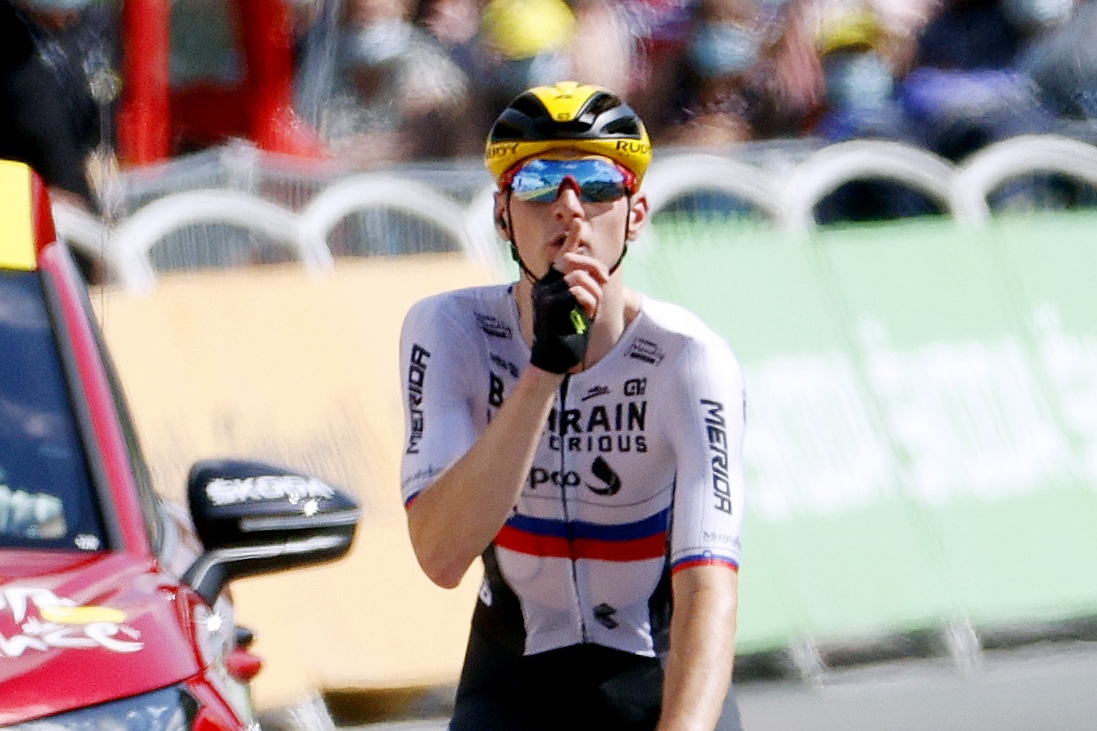
Over 700 bike tests were performed on this Tour, for instance, but that still hasn’t stopped riders from being perturbed by "strange noises" emanating from the hubs of rivals. And while the ITA notes that the quantity of out-of-competition tests in cycling returned to pre-pandemic levels in the first quarter of 2021, Operation Aderlass has highlighted that gaps already existed in the biological passport and cycling’s testing regimen at large.
Testing alone, therefore, is clearly not sufficient. Investigations, like the one that saw officers from the Central Office for the Fight against Environmental and Public Health Damage (OCLAESP) search the Bahrain Victorious hotel and vehicles in Pau last week, are sorely needed to complement traditional methods of detection.
Matej Mohoric missed the point with his celebration in Libourne. The last thing cycling needs is sealed lips. Now more than ever, cycling needs questions to be asked – and to be answered. (BR)
The Tour de France risks becoming a snooze-fest
For some longer-standing fans, the sight of an all-conquering Tour de France leader storming through long lines of sunlit vineyards somewhere in the hinterland of Bordeaux on Saturday’s final time trial sparked not wholly welcome memories of the race in the early 1990s. Simultaneously, as these musty-smelling forms of Indurain-flavoured Tour TT tedium suddenly broke surface for the first time in decades, the urge to nod off on the sofa may well have become irresistible.
With all the respect due to Wout van Aert's amazing but not wholly surprising time trial performance, it mostly went unnoticed that the Tour’s final TT produced zero changes in the order of the top 10 riders on GC. Nix. Nada. In the top 20, just one; Bauke Mollema (Trek-Segafredo) squeezed Sergio Henao (Qhubeka-Hashtag) from 20th to 21st. Jaw-dropping stuff, this ain’t.
In fact, the Bordeaux TT 1990s revival was the umpteenth reminder how abruptly the Tour’s GC plot had shrivelled up and died in the Alps. Barring the odd intense but infrequent wrinkle in the plot-line - like fifteen minutes atop the Mont Ventoux or Carapaz's ill-advised attempt at amateur dramatics on a Pyrenean mountain-top - the only real interest resided in who would win each stage. Consequently, with the one exception of stage 21 when you know in advance that the GC battle is done and dusted, after each day’s racing it was hard not to feel a little let let down.
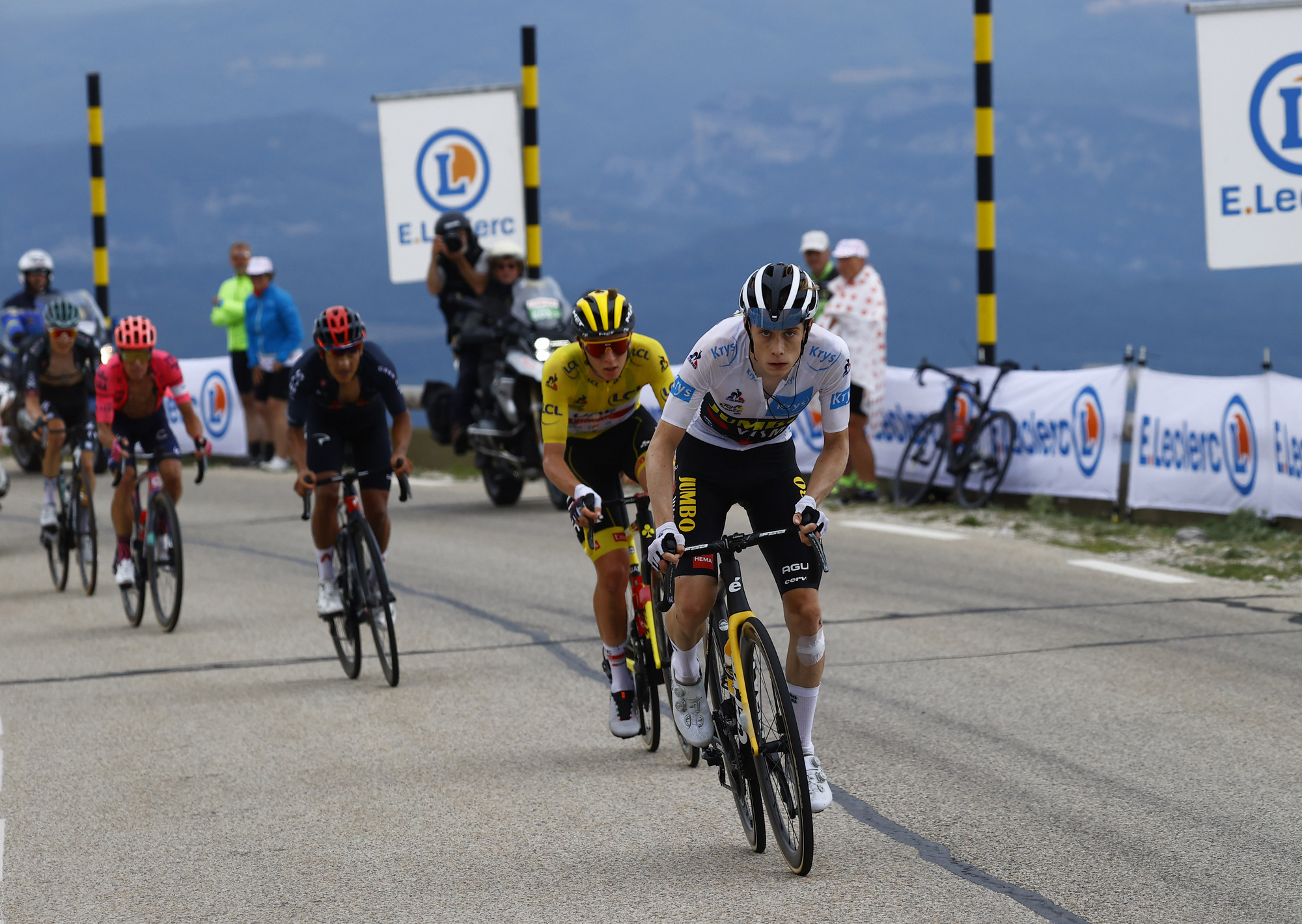
Part of the problem was the huge drama of the first week-and-a-bit had replaced what we’d expect from the third. From Brittany to Tignes it felt like every day produced another hefty emotional punch. Be it yet another GC contender crashing out of contention, or another remarkable Cavendish comeback, or Mathieu Van der Poel powering towards the line to honour his grandfather’s memory, it was as if the Tour was daring you to turn away from the TV screen. But afterwards?
For the future, organisers should maybe note that the two most dramatic mountain GC battles at Le Grand Bornand and the Ventoux weren’t summit finishes, but ended with a downhill. Also, that bookending a Grand Tour with flat time trials might feel like moments of sanity in the typically anarchic Giro, but brings far fewer benefits in a more even-minded event like the Tour de France.
From our side of the fence, fans and journalists should maybe remember not all experiments work - does anybody remember how the Nice mountainous start in 2020 was supposed to provide high first-weekend drama?. Also, to insist on a route aimed at producing excitement every hour of day would just turn the Tour into the latest victim of instant-thrill social media addicts. But there has to be a better balance, somehow. (AF)
Jumbo-Visma prove there is life beyond Roglič
Jumbo-Visma and Ineos both placed riders on the podium after their challenges were depleted by crashes in the opening week, but they followed very different paths to roughly the same destination. While Ineos’ subdued Tour should be the source of much introspection, Jumbo-Visma will draw solace from how they retrieved their race after a heavy fall dashed Primož Roglič’s hopes even before the Alps reared into view.
Tony Martin and Robert Gesink were also forced out by crashes, while Steven Kruijswijk abandoned through illness in the final week, but the squad still left a firm impression on the 2021 Tour. Wout van Aert continued to showcase his status as the peloton’s most complete rider by soloing to victory over Mont Ventoux, winning the Saint-Émilion time trial and then outsprinting Mark Cavendish on the Champs-Élyées, while Sepp Kuss underlined his quality with a fine lone victory in Andorra.
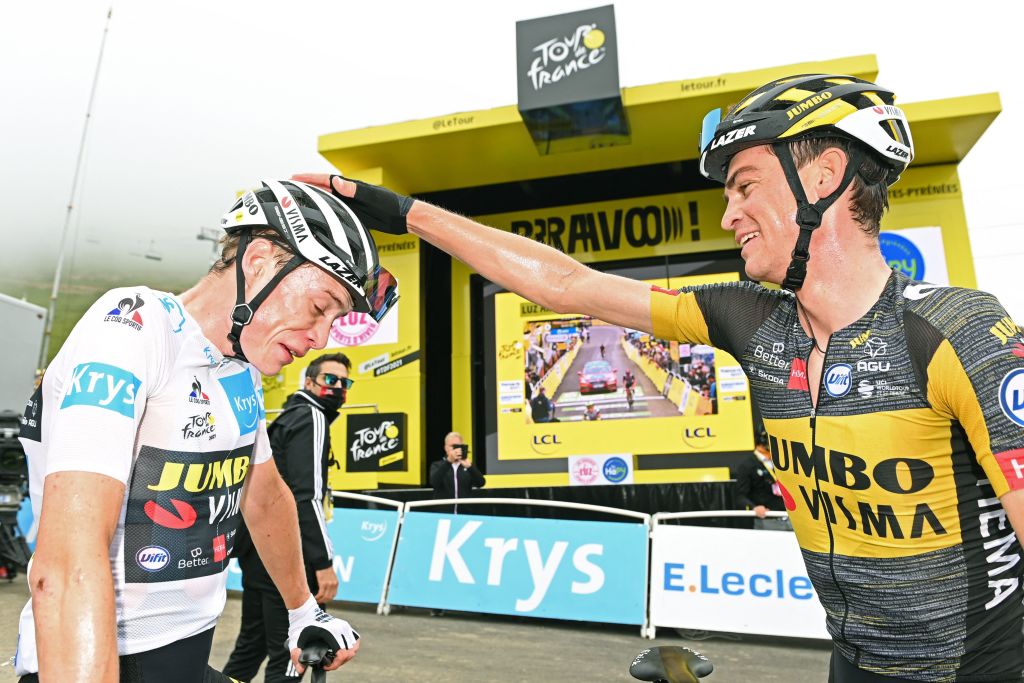
The stand-out achievement, however, was Jonas Vingegaard’s surprising second place overall, capped by the attack over the top of Mont Ventoux that triggered Pogačar’s lone moment of difficulty in three weeks of racing. The Dane never threatened to win the Tour, but he never looked like fading out of the running for a podium place either. At 24 years of age, and just three years removed from combining racing with working in a fish factory, Vingegaard also seems to have ample margin for improvement.
Beating the seemingly unassailable Pogačar in the future will be difficult for all comers, of course, but a full and fit Jumbo-Visma squad, complete with Roglič and perhaps even Tom Dumoulin, might be the most viable rival he faces in the immediate future. (BR)
Pogačar is here to stay - all year
One snippet of information in semi-official Tour de France newspaper L’Equipe last week neatly summed up the scale of Tadej Pogačar’s domination of the 2021 race. It turned out that Pogačar was the first Tour leader to win consecutive stages since Bernard Hinault in 1979. What L’Equipe didn’t mention was that Hinault didn’t win them on mountain-top finishes - they were both flat.
This particular achievement of Pogačar's doesn’t just speak volumes about the UAE Team Emirates rider's level of ambition, it also shows that his superiority is on a level that allows him to win not just when he needs to, but when he wants.
At the Col du Portet, his (wholly laudible) objective, for example, was to take a victory clad in the yellow jersey and to thank his team. That was a goal only attainable to a rider not just more than confident of his own strength, but also that sure he can dip deep into his energy reserves and come back for more the next day. And, as it happens, win again.
Extrapolating this achievement even further, two summit finish stage wins (and both on Hors-Categorie climbs in the third week) while in yellow shows us how badly Pogačar will have to crack before his rivals can catch up with him. Just in Tour de France terms, we already knew from Laval (and Planches des Belles Filles in 2020) he was a consummate time triallist, and that, effectively thanks to the Tour route, anybody who failed to get the better of him on the flat stages needed to push him hard in the mountains. Instead, just the opposite happened.
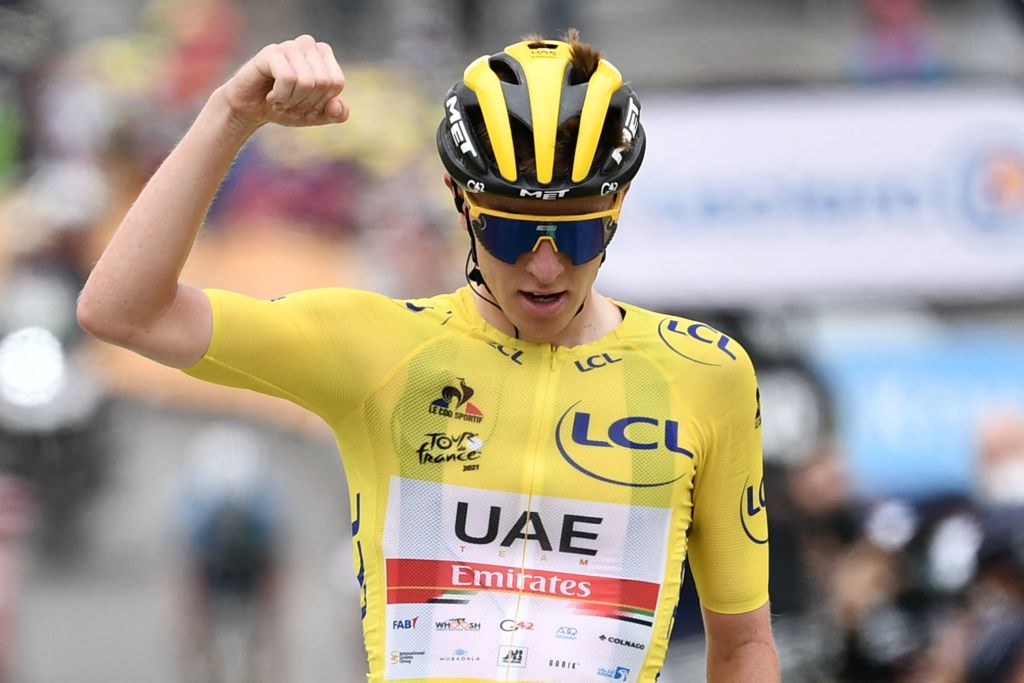
What widens his room for manouevre in the domination game even further is that, in 2021 at least, he’s gone from strength to strength even before the Tour de France began. PogaČar is the first defending Tour champion since Bernard Hinault to win a Monument before the following July, and even discounting the Tour, he remains tied as the most prolific winner of 2021 with Arnaud Démare (Groupama-FDJ).
That extended supremacy is possibly what makes Pogačar’s second Tour victory feel like the beginning of an era. He’s not just head and shoulders above his rivals in July, but all months. Unlike the previous standout figures of cycling, Pogačar is not one to start racing within himself no matter the time of year.
That’s for all he denies it himself and for all there are, as he says, a good number of rivals who could emerge to challenge him, with Egan Bernal currently headlining the opposition. But in any case, his interest in all kinds of races outside the Tour, not just stage racing, is only to be praised. Meanwhile, it’s probably time to start checking Google Translate to see what the Slovenian is for patron. (To save you looking, it’s šef). (AF)

Barry Ryan was Head of Features at Cyclingnews. He has covered professional cycling since 2010, reporting from the Tour de France, Giro d’Italia and events from Argentina to Japan. His writing has appeared in The Independent, Procycling and Cycling Plus. He is the author of The Ascent: Sean Kelly, Stephen Roche and the Rise of Irish Cycling’s Golden Generation, published by Gill Books.